The financial attractiveness of converting to organic farming under the CAP Strategic Plan has witnessed a meteoric rise in the number of farmers converting.
The number of farmers participating in the Organic Farming Scheme has increased from approximately 1,685 in 2021 to 5,600 farmers in 2025. This is not surprising with average payments currently in the region of €12,000 per holding.

A feeding passage has been temporarily converted to a straw lieback to adhere to the requirement of at least 50% of lying area being solid floored bedding.
Ireland now has 248,000ha, or 5.5% of its utilisable agricultural area (UAA), destined for organic production with ambitious plans to grow this to 10% of UAA by 2030.
The funding on offer has been very attractive to the sheep sector and in particular to extensive hill systems with a large area of enclosed lands.
Over 2,500 of the 5,600 participants have sheep as their primary enterprise, with many systems majoring in suckler/beef production and also running a sheep enterprise.
Based on current numbers in conversion the number of ewes farmed organically will increase from about 60,000 to over 200,000 in the next few years.
Two major challenges facing the sector include stemming the current leakage of over 70% of lambs being finished in conventional systems and developing new markets and routes to market to deliver a premium for organic sheepmeat.
Teagasc studies
Teagasc has commenced a new project, GRO-FarmS: Growing Resilient Organic Farming Systems.
Funded by the Department of Agriculture and in collaboration with University College Dublin (UCD) the project aims to evaluate finishing options and management systems for finishing organic hill and lowland lambs taking into account effects on animal performance, environmental impact and economic returns.
The project is split into two elements:
A lowland lamb finishing systems study where a comparison of two contrasting forage-based lamb finishing systems will be investigated; and Hill lamb-based finishing studies focusing on both outdoor forage-based finishing strategies and indoor forage and concentrate systems.Study metrics
A number of specific sub-objectives of the projects include the following:
To evaluate the effect of the finishing system on lamb performance in terms of growth rate, parasite challenge and finishing patterns in the lambs.To evaluate the effect of forage type on feed supply, utilisation and quality.To evaluate the effect of the finishing system on environmental impact including nitrate leaching and greenhouse gas emissions from lambs.To evaluate the effect of the finishing system on overall system environmental and economic performance.Lowland studies
The two lowland production systems compared include a high legume-based system incorporating white and red clover to provide high-quality grazing and silage for finishing lambs while the second production system is the same until weaning and then incorporates forage crops for finishing lambs.
The lowland and hill studies are taking place in Mellows Campus Athenry and will be overseen by Philip Creighton, head of sheep enterprise, and Frank Campion, research officer.The areas of the farm allocated to the studies have been farmed organically since 2022.The lowland component systems include 100 ewes plus their lambs stocked at a relatively high stocking rate of 7.5 ewes/ha. This includes the forage area and winter feed must be produced within each farmlet. Ewe type is a Belclare x Texel ewe mated back to Texel sires lambing from early March.The average litter size in 2024 was recorded in the region of 1.56 lambs per ewe joined. All sheep are managed to strict organic principles with any health treatments as per the flock health plan and withdrawal dates doubled/tripled as required.
Lamb performance pre-weaning has been recorded at 240g/head/day and 160g/head/day up to early September. At this stage, there was 46% of lambs drafted with this figure including 24% of lambs slaughtered and 22% retained as replacements.
At this stage the remaining lambs were split between clover swards and forage crops. The drafting rate up to the end of November was recorded at 95% for lambs on hybrid brassica and 73% on grass-clover swards.
Of particular interest will be the role of forage crops in reducing worm burdens on swards.
Pasture production was good with 6.99t of dry matter produced up to mid-November. It will again be interesting to see if soil nutrient levels can be maintained at a reasonable level to sustain relatively positive levels of forage production.
Philip adds that management of clover swards will also be crucial if the system is to work satisfactorily.
Production on the forage crop up to mid-December was 4.72t DM/ha produced by the hybrid brassica and 3.71t DM/ha for vetch. The potential benefit of vetch being explored is that it is a legume which can fix nitrogen, form a crop canopy rapidly and thereby compete to good effect with weeds.
The experience this year, however, has been somewhat different with the vetch crop slow to get going allowing quite a high weed burden to develop which has reduced the potential yield.
Hill lambs
As mentioned already, the hill lamb finishing systems will explore outdoor and indoor finishing systems. Hill lambs were sourced from organic hill sheep enterprises and purchased onto Mellows Campus.
Frank explains that extensive research has been carried out in recent years evaluating the potential role of forage crops in finishing hill lambs.

Teagasc hill lamb organic study November 2024.
This has delivered relatively positive results in a conventional system so it will be interesting to see if this can be replicated using forage rape and hybrid brassicas in an organic management system.
Again, there will be a focus on establishing yield, utilisation and carrying capacity potential of differing forage crop options and the effect of such on lamb performance.
The effect of starting liveweight on lamb performance will also be evaluated with a range in weights from 25kg to 32kg in hill lambs selected for the study.
Indoor finishing.
The indoor finishing treatments aim to evaluate a range of forage and concentrate-based finishing diets.
Included in this are high-quality grass silage and concentrates, high-quality red clover silage and concentrates and a combi/wholecrop forage-based finishing diet.
The combi crop used in 2024 is peas, barley and oats ensiled in 4x4 round bales. It will be interesting to see how lambs perform on this crop and aspects such as the intake, refusal of straw etc.
Frank explains that there is a learning curve element with many aspects of the study, including practical learnings. For example, lambs are eating on slats with their lie-back part of the passageway of the shed.
Simple things such as lambs pulling straw on to slats were quickly evident with the height of a timber step between the bedded and slatted area quickly raised. This is forcing lambs to step over the entrance and reducing straw being pulled in.
In short
Farmers will be interested to see how lambs perform on the different forages given the higher cost of concentrates in an organic system. There is currently a high level of over 70% of lambs leaking from organics and ending up in conventional systems.The studies aim to evaluate and develop finishing systems with all components of the system from animal performance to forage production and economics evaluated.Lowland lambs will be finished on grass — clover and forage crops and hills lambs on a mixture of forage crops and indoor finishing treatments.
The financial attractiveness of converting to organic farming under the CAP Strategic Plan has witnessed a meteoric rise in the number of farmers converting.
The number of farmers participating in the Organic Farming Scheme has increased from approximately 1,685 in 2021 to 5,600 farmers in 2025. This is not surprising with average payments currently in the region of €12,000 per holding.

A feeding passage has been temporarily converted to a straw lieback to adhere to the requirement of at least 50% of lying area being solid floored bedding.
Ireland now has 248,000ha, or 5.5% of its utilisable agricultural area (UAA), destined for organic production with ambitious plans to grow this to 10% of UAA by 2030.
The funding on offer has been very attractive to the sheep sector and in particular to extensive hill systems with a large area of enclosed lands.
Over 2,500 of the 5,600 participants have sheep as their primary enterprise, with many systems majoring in suckler/beef production and also running a sheep enterprise.
Based on current numbers in conversion the number of ewes farmed organically will increase from about 60,000 to over 200,000 in the next few years.
Two major challenges facing the sector include stemming the current leakage of over 70% of lambs being finished in conventional systems and developing new markets and routes to market to deliver a premium for organic sheepmeat.
Teagasc studies
Teagasc has commenced a new project, GRO-FarmS: Growing Resilient Organic Farming Systems.
Funded by the Department of Agriculture and in collaboration with University College Dublin (UCD) the project aims to evaluate finishing options and management systems for finishing organic hill and lowland lambs taking into account effects on animal performance, environmental impact and economic returns.
The project is split into two elements:
A lowland lamb finishing systems study where a comparison of two contrasting forage-based lamb finishing systems will be investigated; and Hill lamb-based finishing studies focusing on both outdoor forage-based finishing strategies and indoor forage and concentrate systems.Study metrics
A number of specific sub-objectives of the projects include the following:
To evaluate the effect of the finishing system on lamb performance in terms of growth rate, parasite challenge and finishing patterns in the lambs.To evaluate the effect of forage type on feed supply, utilisation and quality.To evaluate the effect of the finishing system on environmental impact including nitrate leaching and greenhouse gas emissions from lambs.To evaluate the effect of the finishing system on overall system environmental and economic performance.Lowland studies
The two lowland production systems compared include a high legume-based system incorporating white and red clover to provide high-quality grazing and silage for finishing lambs while the second production system is the same until weaning and then incorporates forage crops for finishing lambs.
The lowland and hill studies are taking place in Mellows Campus Athenry and will be overseen by Philip Creighton, head of sheep enterprise, and Frank Campion, research officer.The areas of the farm allocated to the studies have been farmed organically since 2022.The lowland component systems include 100 ewes plus their lambs stocked at a relatively high stocking rate of 7.5 ewes/ha. This includes the forage area and winter feed must be produced within each farmlet. Ewe type is a Belclare x Texel ewe mated back to Texel sires lambing from early March.The average litter size in 2024 was recorded in the region of 1.56 lambs per ewe joined. All sheep are managed to strict organic principles with any health treatments as per the flock health plan and withdrawal dates doubled/tripled as required.
Lamb performance pre-weaning has been recorded at 240g/head/day and 160g/head/day up to early September. At this stage, there was 46% of lambs drafted with this figure including 24% of lambs slaughtered and 22% retained as replacements.
At this stage the remaining lambs were split between clover swards and forage crops. The drafting rate up to the end of November was recorded at 95% for lambs on hybrid brassica and 73% on grass-clover swards.
Of particular interest will be the role of forage crops in reducing worm burdens on swards.
Pasture production was good with 6.99t of dry matter produced up to mid-November. It will again be interesting to see if soil nutrient levels can be maintained at a reasonable level to sustain relatively positive levels of forage production.
Philip adds that management of clover swards will also be crucial if the system is to work satisfactorily.
Production on the forage crop up to mid-December was 4.72t DM/ha produced by the hybrid brassica and 3.71t DM/ha for vetch. The potential benefit of vetch being explored is that it is a legume which can fix nitrogen, form a crop canopy rapidly and thereby compete to good effect with weeds.
The experience this year, however, has been somewhat different with the vetch crop slow to get going allowing quite a high weed burden to develop which has reduced the potential yield.
Hill lambs
As mentioned already, the hill lamb finishing systems will explore outdoor and indoor finishing systems. Hill lambs were sourced from organic hill sheep enterprises and purchased onto Mellows Campus.
Frank explains that extensive research has been carried out in recent years evaluating the potential role of forage crops in finishing hill lambs.

Teagasc hill lamb organic study November 2024.
This has delivered relatively positive results in a conventional system so it will be interesting to see if this can be replicated using forage rape and hybrid brassicas in an organic management system.
Again, there will be a focus on establishing yield, utilisation and carrying capacity potential of differing forage crop options and the effect of such on lamb performance.
The effect of starting liveweight on lamb performance will also be evaluated with a range in weights from 25kg to 32kg in hill lambs selected for the study.
Indoor finishing.
The indoor finishing treatments aim to evaluate a range of forage and concentrate-based finishing diets.
Included in this are high-quality grass silage and concentrates, high-quality red clover silage and concentrates and a combi/wholecrop forage-based finishing diet.
The combi crop used in 2024 is peas, barley and oats ensiled in 4x4 round bales. It will be interesting to see how lambs perform on this crop and aspects such as the intake, refusal of straw etc.
Frank explains that there is a learning curve element with many aspects of the study, including practical learnings. For example, lambs are eating on slats with their lie-back part of the passageway of the shed.
Simple things such as lambs pulling straw on to slats were quickly evident with the height of a timber step between the bedded and slatted area quickly raised. This is forcing lambs to step over the entrance and reducing straw being pulled in.
In short
Farmers will be interested to see how lambs perform on the different forages given the higher cost of concentrates in an organic system. There is currently a high level of over 70% of lambs leaking from organics and ending up in conventional systems.The studies aim to evaluate and develop finishing systems with all components of the system from animal performance to forage production and economics evaluated.Lowland lambs will be finished on grass — clover and forage crops and hills lambs on a mixture of forage crops and indoor finishing treatments. 





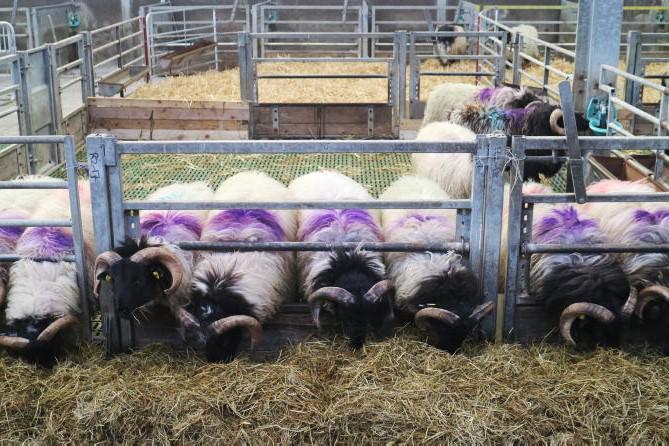
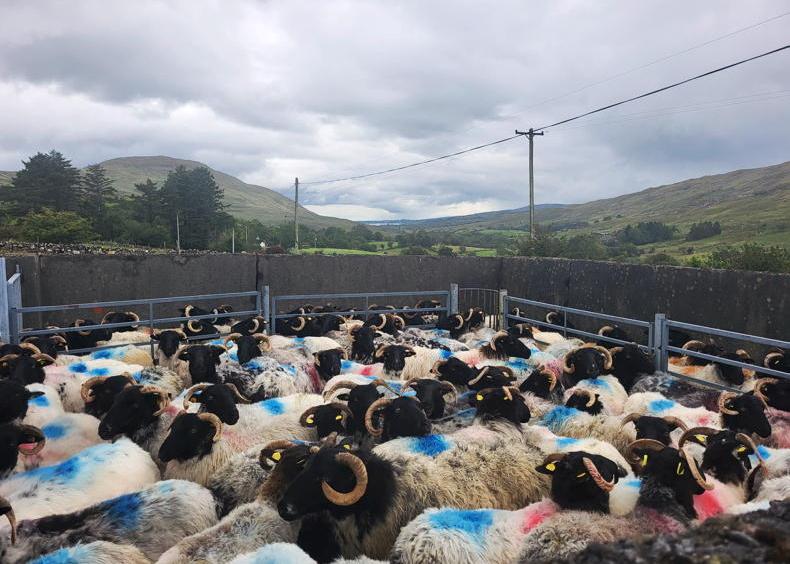

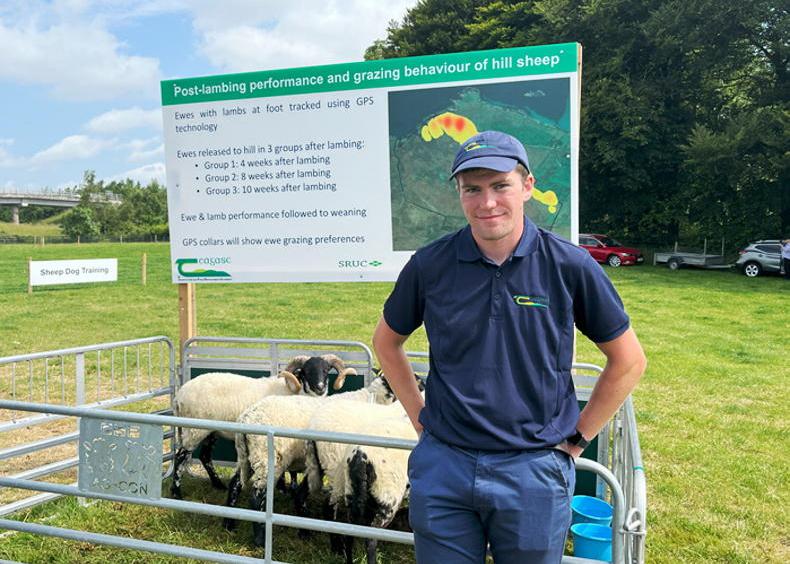
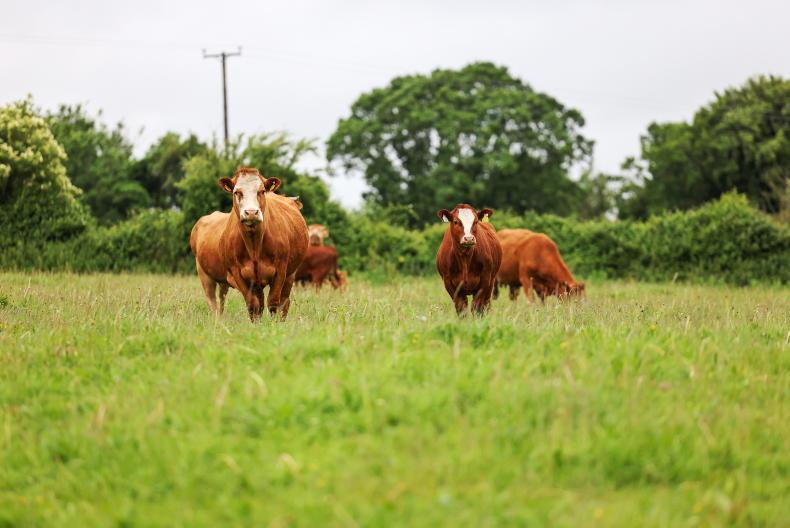
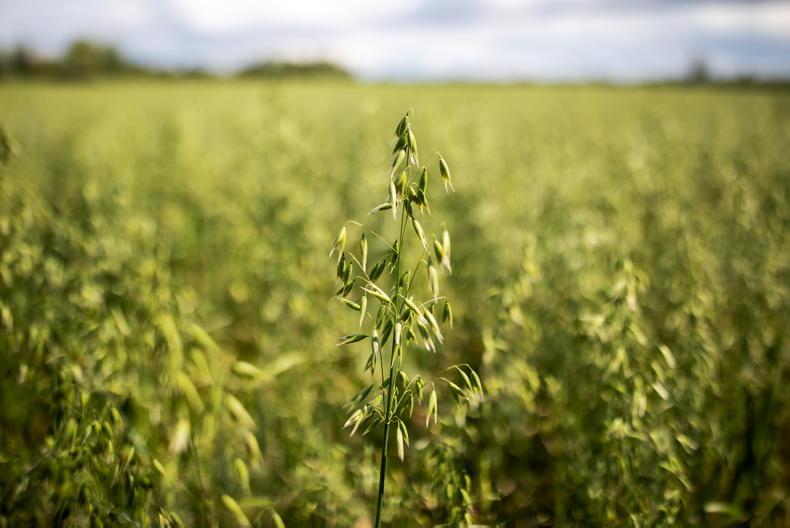
SHARING OPTIONS